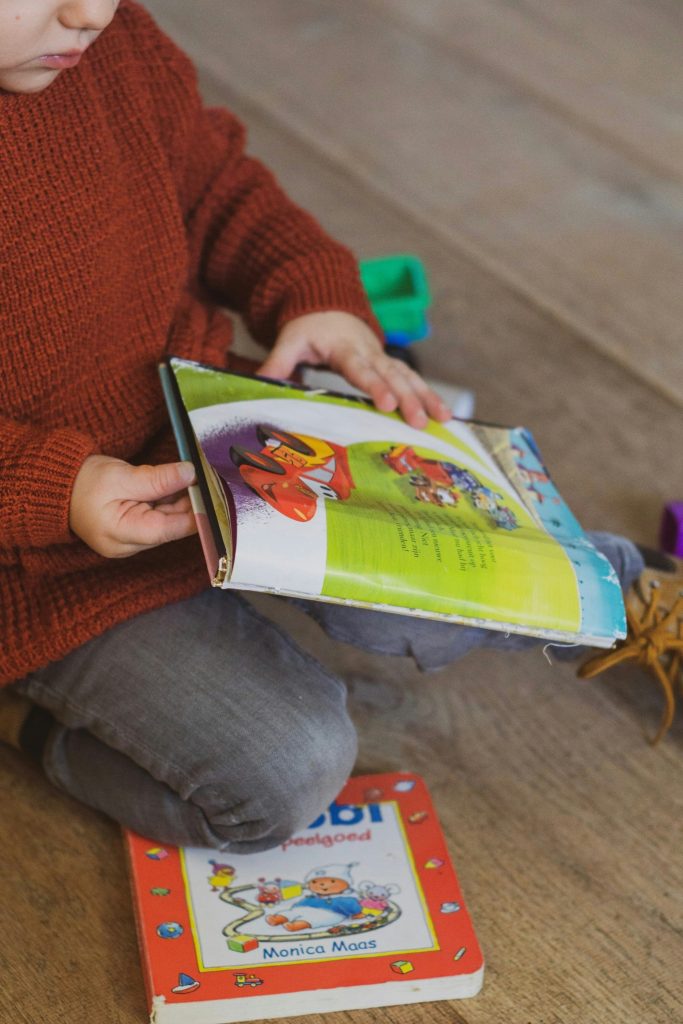To support your child’s language development, focus on incorporating a few simple, effective strategies into your daily routine. By using these Speech Therapy Activities Parents Can Do at Home in 10 Minutes a Day, you can make a significant impact.
- The “Why”: These books are fantastic for building language foundations. The repetition helps children predict what’s coming next, which boosts their confidence and memory. It also exposes them to new vocabulary in a predictable and fun way.
- The “How”:
- Get Animated: Use different voices for each animal or character. This keeps your child engaged and helps them differentiate between the different parts of the story.
- Point and Track: As you read, run your finger under the words. This helps your child begin to connect the spoken words with the written ones, a crucial pre-reading skill.
- Pause and Wait: Leave a pause before the last word of a line. For example, “Brown Bear, Brown Bear, what do you…?” See if your child tries to fill in the blank with “see?”
- Make it a Game: Point to an animal on the page and ask, “What do you see?” or “What’s that?”
2. Holding Things at Eye Level
- The “Why”: As you saw in the video we shared, holding objects at your child’s eye level encourages them to look at your face. This is vital for them to see how your mouth and lips move as you form words. It also helps them see your facial expressions, which are key to understanding the emotion behind the words.
- The “How”:
- Get Down on Their Level: Whether they’re in a high chair or playing on the floor, get down so your face is level with theirs. This makes it easier for them to look at you.
- Talk as You Play: Hold a favorite toy, a snack, or a ball at your eye level and talk about it. Say, “Look at this ball!” or “Yummy cracker!” and then give it to them.
- Use Your “Talking Face”: Over-exaggerate your mouth movements and smile. This makes it more fun and engaging for your child to watch you speak.
3. Attributing Meaning to Sounds and Serving It Back
- The “Why”: This is one of the most powerful communication strategies, and it was highlighted in the video clip in the email. When your child makes a sound—a coo, a babble, or even a grunt—you are giving it a meaning. This teaches them that their sounds are important and that they can be used to communicate.
- The “How”:
- Interpret and Respond: If your child says, “ba-ba,” you can respond with, “Oh, you want the bottle?” or “Yes, that’s a ball!”
- Expand and Elaborate: Take their sound and turn it into a full sentence. If they say, “Da!” while looking at the dog, you can say, “Yes! That’s the doggie! The big doggie is walking!”
- Make it a Conversation: Respond with a question to keep the back-and-forth going. For example, if they babble, you can say, “Oh really? And what happened next?”
4. Incorporating More Gestures into Play
- The “Why”: Before children can use words, they use their bodies to communicate. Gestures like waving “bye-bye,” shaking their head “no,” or pointing are their first words. The more you model these gestures, the more your child will use them to express their needs and wants.
- The “How”:
- Exaggerate Your Actions: When you’re ready to eat, rub your belly and say “Yummy!” When you go outside, point to the door.
- Pair Gestures with Words: Always say the word as you make the gesture. Say “More!” while you sign for “more.” Say “Up!” while you lift them into your arms.
- Play Imitation Games: Clap your hands and encourage them to copy you. Play “Pat-a-Cake” or “Itsy Bitsy Spider” to teach them fun new gestures.
5. Setting Up a Tent or Quiet Play Space
- The “Why”: A small, enclosed space, like a play tent or a fort made with blankets, provides a calming and cozy environment for your child. It can help them feel safe and secure, which makes them more likely to engage in focused, quiet play. This type of play is excellent for developing concentration and independent skills.
- The “How”:
- Make It Inviting: Put soft blankets, pillows, and a few favorite books or toys inside the tent. Keep the selection small and intentional to avoid overwhelming your child.
- Keep it Low-Tech: This space is meant to be a quiet retreat. Avoid bringing in screens or noisy toys.
- Let Them Lead: Your role is to set up the space and then let your child decide what to do inside. They can look at books, cuddle a stuffed animal, or just sit quietly.
- Use it as a Designated “Calm-Down” Area: If your child is feeling overstimulated or upset, you can gently guide them to the tent. You can say, “Let’s go into our quiet space for a little bit.”
